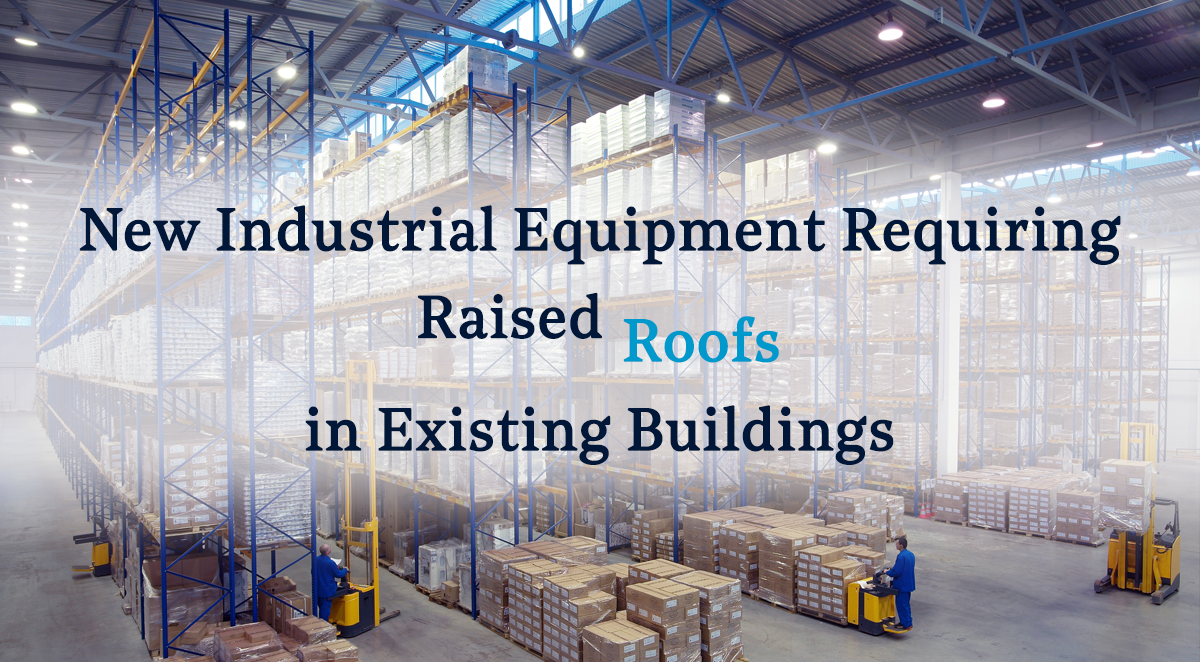New Industrial Equipment Requiring Raised Roofs in Existing Buildings
By Natalie Jones / 09.09.20 / 3 min read
In current-day commercial real estate, industrial buildings raise the roof, literally. With tenants’ desire for more cubic feet and the subsequent added height of 4-12 feet on new buildings, there are two options for older buildings: adjust the roof or move to a new location.
How do distributors and manufacturers make this decision?
Distributors tend to move to a new location when a higher roof is in demand. They’re able to lease a space while a new facility is under construction. However, manufacturers typically opt to raise part of or all of the roof to house new equipment. This is because they want to stay on track with supply contract schedules.
Jeff Williams, CEO of JM Williams Contractors, Atlanta, explains that manufacturers avoid the cost of moving assembly lines and restarting the process and commonly choose to make partial adjustments for more space.
“Generally, however, we have this sectional bumping up because of a situation where you have this new equipment, model, or style. It’s something that would cause us to create more headroom above the equipment.”
What factors into raising a roof?
Prior knowledge of the roof is essential, and this includes accurate drawings of the original structure, an understanding of the footers’ depth, and how realistic it would be to add weight onto the walls. The pre-existing roof condition also provides important information to know before starting the process. According to Bill Early, SIOR, senior vice president of Hailsolve in Overland Park, Kansas, hail and other forms of weather damage can make a difference between boosting cash flow and depleting capital reserves.
An understanding of the labor, required equipment, and time help make informed decisions for raising a roof. Williams says that it’s necessary to know that raising a roof doesn’t take as long compared to building a new site. In fact, even the roofs of bigger buildings are raised in segments, so the process isn’t complicated.
Although this physical alteration includes several costs and considerations, it is ultimately a solution for manufacturers who want their workflow to be uninterrupted. To read more about the logic and outcomes of raising a roof on industrial buildings, click here.








